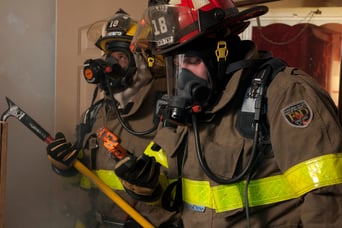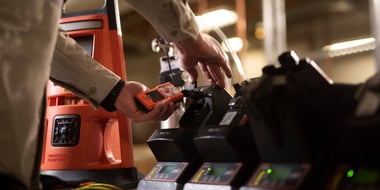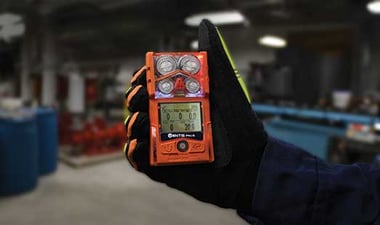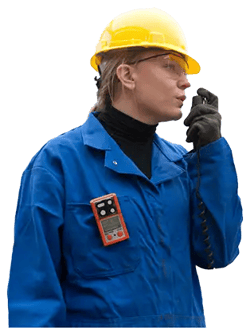Maintaining gas detectors is crucial to ensure the safety of your workers. Neglecting maintenance can lead to costly downtime, inaccurate readings, and significant safety hazards. Solutions like iNet® Exchange automate maintenance, eliminating downtime and streamlining the entire process.
The Challenges of Traditional Gas Monitor Maintenance
 When a gas detector needs repair, delays can disrupt operations for days or even weeks. Handling repairs on-site can be challenging, especially when staff are responsible for multiple pieces of equipment, leading to high workloads and potential delays in critical maintenance tasks. Maintaining extra monitors to cover downtime increases expenses unnecessarily, driving up costs without adding value.
When a gas detector needs repair, delays can disrupt operations for days or even weeks. Handling repairs on-site can be challenging, especially when staff are responsible for multiple pieces of equipment, leading to high workloads and potential delays in critical maintenance tasks. Maintaining extra monitors to cover downtime increases expenses unnecessarily, driving up costs without adding value.
The cost of managing a gas detection program extends beyond the direct expenses of equipment, however. Indirect costs such as downtime, labor, and administrative tasks also add up. For instance, processing purchase orders alone can cost companies up to $400 per order, making the true cost of maintenance much higher than anticipated.
Gas detectors are complex devices that require specialized knowledge for repairs. Mishandling these repairs can compromise safety and lead to extended equipment downtime when relying on third-party services. This complexity makes it challenging to ensure that all maintenance is performed correctly and promptly.
How Subscription Services Simplify Gas Monitor Maintenance
What is iNet® Exchange?
iNet® Exchange is a subscription service designed to automate equipment maintenance and replacements. This comprehensive service covers everything from gas detectors and shipping to calibration gas, docking stations, and training, allowing your team to focus on other priorities while ensuring that your equipment is always safe and ready to use.
Automated Replacement Process
Connected docking stations proactively scan your gas monitors and predict failures before they occur, triggering automatic replacements. New units typically arrive within 24-48 hours, often before the old device fails, ensuring continuous operation and safety.
Pre-Scheduled Restocking for Consumables
Calibration gas levels are monitored automatically and replenished based on usage. This avoids the risk of using expired sensors or running out of calibration gas, ensuring that your monitors are always ready for use.
Five Key Benefits of Subscription-Based Maintenance Services
- Increase Equipment Uptime
Automatic replacements minimize downtime, ensuring that workers always have the equipment they need. There's no need to store backup equipment for emergencies, which simplifies inventory management and reduces costs. - Cut Costs Without Compromising Safety
Subscription services reduce redundant purchases and unnecessary labor costs. Fixed monthly fees provide clarity into your spending, making financial planning easier and eliminating surprise expenses. - Expert Support On-Demand
With 24/7 technical support, you can troubleshoot issues and gain insights into fleet performance whenever needed. Detect early sensor failures and avoid unexpected repairs by relying on expert guidance. - Smarter Decision-Making with Data Insights
Customized reports track calibration, bump tests, and equipment performance, providing valuable data to optimize fleet size and reduce unnecessary equipment. Use these insights to make informed decisions and improve overall safety. - Maintenance Plans to Match Evolving Needs
Subscription services offer the flexibility to adjust the number of devices or service frequency as project needs change. Whether you have a small or large gas detector fleet, lease options can be customized to meet your specific requirements.
Best Practices for Managing Gas Detector Maintenance Efficiently
- Monitor Fleet Performance with Docking Stations
Automated diagnostics help track sensor health and calibration needs, ensuring that your gas detectors are always functioning correctly. - Optimize Fleet Size Based on Usage Data
Leverage detailed reports to reduce excess monitors and cut operational costs, ensuring that you only maintain the equipment you truly need. - Shift from Reactive to Proactive Maintenance
Predict failures and schedule replacements in advance to prevent disruptions, moving from a reactive to a proactive maintenance approach. - Simplify Your Gas Monitor Maintenance Program with iNet® Exchange
Subscription-based services like iNet® Exchange streamline gas monitor maintenance and ensure safety. Automated maintenance eliminates downtime, reduces operational costs, and provides peace of mind that your equipment is always in top condition.
Explore iNet® Exchange to take the hassle out of gas monitor maintenance and keep your team safe and productive.




